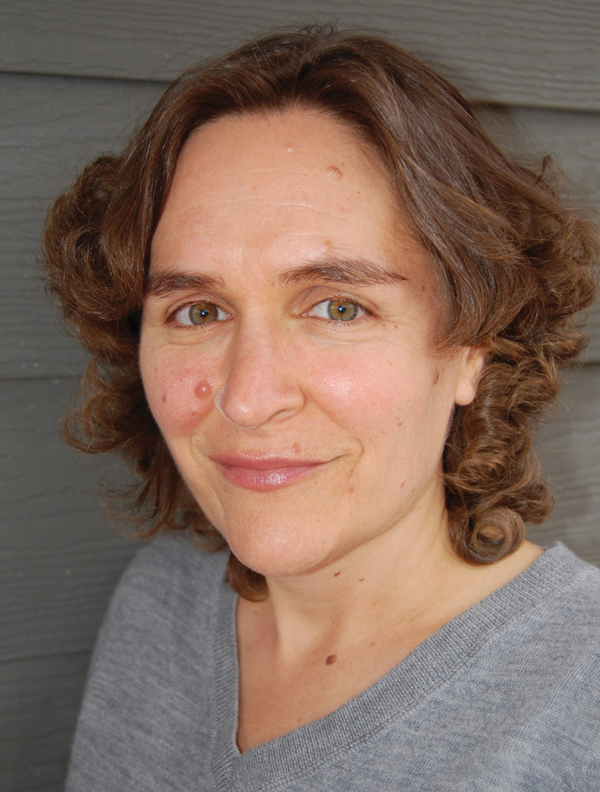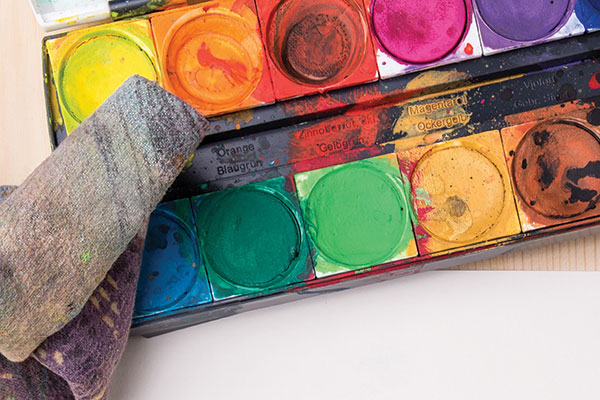Art & Meditation for the Cancer Journey
by Stephanie McLeod-Estevez, LCPC
Art. Meditation. These two words stir performance anxiety in many of us. In fact, you may be thinking to yourself, This sounds nice, but it’s not for me. However, I’m hoping you will keep an open mind and read on. Because when it comes to using art and meditation to emotionally heal from cancer, neither experience nor talent is necessary to reap the rewards.
You may wonder how this can be true. Well, unlike with fine art, art therapy focuses on the process, not the product. And so, it becomes a form of communication, rather than a display of talent, its purpose to translate your internal experience into something external and tangible. Using art to express your thoughts, feelings, and experiences allows for a more gentle re-entry into that which has created fear, pain, or suffering.
Being diagnosed with cancer is often a traumatic experience, leaving you feeling vulnerable and insecure. To survive the experience, you may compartmentalize the parts that feel too overwhelming to deal with in the moment. Initially, this is a useful strategy for coping with the immediate crisis; however, over time, compartmentalization interferes with emotional, physical, and spiritual recovery. The adrenaline that kept you going dissipates, and left in its wake are the thoughts, feelings, and experiences that you couldn’t fully process because you needed to focus on survival.
So why art? Well, when you are recalling aspects of a traumatic event, your nervous system can become distressed. You can become re-traumatized if you don’t respect your need for pacing. Since the foundation of therapeutic art lies in the principle of staying deeply connected to yourself, you are much more likely to pay attention to your body’s cues that you are feeling overwhelmed. Art also helps you process traumatic memories by breaking them down into manageable amounts of material, allowing you to remain present and grounded, rather than going into fight, flight, or freeze mode.
Creativity and wisdom often are fed by the same source.
When you are using art, part of your attention is focused on the materials and what you are doing with them; the rest attends to your internal world. Moving into a project, you begin to slow down your physical sensations, and breathing becomes soft and gentle while the mind quiets and the body becomes peaceful. As you relax, your internal focus leads you to the information that needs to be processed at that time. It is at this point that art merges with meditation.
Meditation isn’t always the act of clearing the mind. For example, Vipassana meditation is the practice of actively observing the deep interconnection of the body and mind. When you use art to express what is happening inside, it becomes a form of moving meditation, similar to yoga.
I first experienced the healing power of art during my graduate studies as I processed my mother’s death from breast cancer. By processing the loss on canvas, and through poetry, self-reflection, and, of course, written assignments, I found my way through the fog of loss and pain. It was a transformative experience; the art helped me express what words often failed to capture.
When I was diagnosed with breast cancer, I knew that art would be an important part of my emotional healing process. I tuned in to each flash of creative inspiration, trusting that these sparks would guide me. Creativity and wisdom often are fed by the same source.
To put this into practice, imagine we are sitting together, contemplating your personal experience with cancer. In front of you is a blank piece of paper, easy-to-use art supplies (like oil pastels, colored pencils, and charcoal), and, perhaps, clippings of words and images from a magazine. If I asked you to think of an important event in your cancer journey and then express it abstractly on paper, what would you draw?
Now, go and draw it.

Stephanie McLeod-Estevez is an art therapist and breast cancer survivor. She began Creative Transformations to help others who are healing from a life-threatening illness or injury. Creative Transformations offers individual art therapy sessions (in person or via Skype), workshops, and a weekly blog. For more information, and to sign up for Stephanie’s weekly blog, visit creative-transformations.com.
This article was published in Coping® with Cancer magazine, November/December 2016.


